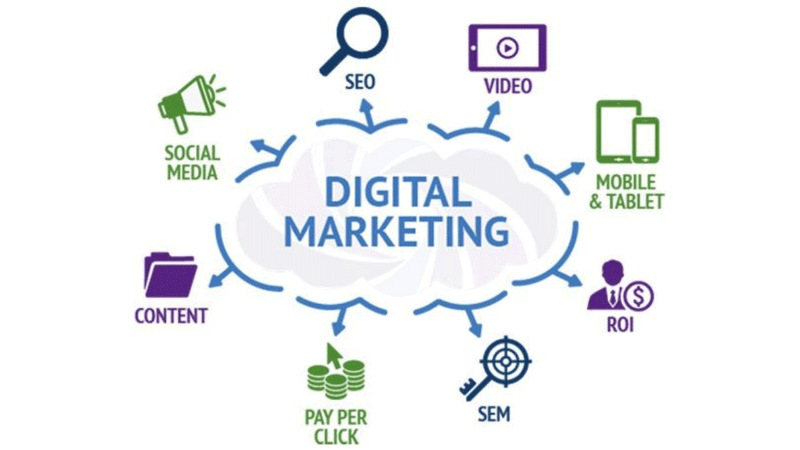Enhance Individual Experience and Drive Web Traffic With Responsive Web Style
In today's digital landscape, where individuals are accessing sites from a wide variety of tools, receptive internet layout has actually come to be more crucial than ever before. With its capacity to adjust and perfectly change to different screen dimensions, responsive design not just boosts individual experience however likewise drives traffic to your site. Why is this layout approach so essential? How does it boost customer interaction and increase site traffic? In this discussion, we will certainly discover the crucial elements of effective responsive design, explore the most effective practices for its implementation, and uncover the secrets to boosting individual experience while driving more website traffic to your web site.
Why Responsive Web Layout Issues
Responsive website design is an essential facet of modern-day web growth due to its capability to make certain ideal customer experience across different tools and screen dimensions. With the spreading of smart devices, tablets, and various other mobile devices, it has come to be important for internet sites to adapt and give seamless performance despite the device being utilized.
The primary reason that responsive website design issues is that it allows individuals to have a consistent and delightful searching experience, despite the tool they are using. A receptive website automatically changes its material, style, and layout components to fit the display size and resolution of the device, making sure that individuals can quickly interact and navigate with the site without any type of trouble or frustration.
Moreover, responsive internet layout additionally plays a substantial duty in seo (SEO) Online search engine, such as Google, focus on internet sites that are receptive and mobile-friendly in their search results. By integrating responsive design principles, websites can boost their presence and ranking, resulting in enhanced natural traffic and potential customers.

Boosting Customer Engagement With Responsive Design
Optimizing user interaction is a key goal of responsive design, as it ensures that customers can easily accessibility and interact with site material on any kind of tool. With the raising use tablets and smart devices, it is important for websites to adjust to various screen sizes and resolutions. Receptive style makes it possible for websites to instantly change their layout and web content to provide a seamless individual experience across tools.
Among the major means receptive design enhances customer engagement is by reducing load times. With a receptive web site, individuals don't have to wait on separate mobile versions to lots, leading to faster accessibility to content. This enhanced rate brings about higher customer satisfaction and urges them to invest more time on the website.
In addition, receptive design boosts customer engagement by enhancing navigation and interface (The Ad Firm seo). When a web site is made responsively, buttons and menus are maximized for touch interactions, making it simpler for customers to browse and engage with the site on their mobile tools. This intuitive and user-friendly experience maintains users involved and urges them to explore even more of the internet site
In addition, receptive design allows for better content exposure and readability. By adjusting the layout and font sizes to various gadgets, receptive internet sites ensure that individuals can easily comprehend the web content and read. This improves customer involvement by minimizing the need for scrolling or zooming to check out the message.
Increasing Web Site Traffic With Responsive Website Design
With the growing appeal of mobile gadgets, having an internet site that is responsive to different display sizes and resolutions is essential for driving raised traffic. In today's electronic landscape, users are accessing sites from a variety of devices such as mobile phones, tablet computers, and desktop computers. Each of these tools has different display sizes and resolutions, and if your site is not designed to adjust to these variants, it can bring about an inadequate individual experience and a loss of possible web traffic.
Responsive web layout makes certain that your internet site looks and operates ideally throughout all devices. By making use of versatile grids, fluid images, and media inquiries, receptive layout allows your site to automatically change its web content, navigating, and design to fit any type of screen size. This implies that individuals will certainly have a seamless surfing experience no matter of whether they are utilizing a huge desktop or a little smart device computer.
Crucial Element of Effective Responsive Layout
Effective receptive design includes numerous vital aspects that guarantee a seamless individual experience across various tools. This enables content to be presented in a visually enticing and understandable manner on any type of tool.
Another crucial element is media questions. These allow designers to use different designs and formats based upon the characteristics of the individual's device, such as display dimension and alignment. By utilizing media queries, developers can maximize the presentation of web content for each device, making certain that it is readable and easily obtainable.
Responsive images are additionally important in effective responsive layout. Pictures that are too huge can reduce web page tons times on mobile phones, while pictures that are also small may appear pixelated on bigger screens. By utilizing methods such as receptive picture resizing and careless loading, developers can make certain that pictures are suitably sized and optimized for each and every device.
Finally, effective receptive layout involves a mobile-first strategy. This suggests prioritizing and making material for mobile phones initially, and then boosting the layout and expanding for bigger screens. This technique makes sure that the most essential content is quickly available on smaller sized displays, while still supplying an abundant experience on larger devices.
Best Practices for Executing Responsive Web Design
Applying receptive website design needs mindful consideration of various ideal methods to ensure an optimal user experience throughout different devices. When carrying out receptive internet design., here are some vital best techniques to adhere to.
First of all, it is critical to prioritize mobile individuals. With the enhancing prominence of mobile phones, developing for mobile-first has come to be essential. Beginning deliberately for smaller sized displays and after that gradually enhance the design for bigger screens.

An additional crucial finest method is to maximize photos for various display resolutions. Large pictures can decrease the packing time of my explanation your website, particularly important source on mobile tools with slower links. Usage responsive images that can be resized based upon the tool's screen resolution to boost performance.
Additionally, examination your website on various tools and screen sizes to guarantee a smooth and constant experience. There are different testing tools readily available that can assist you recognize any concerns and make necessary modifications.
Last but not least, focus on usability and ease of access. Ensure that your web site is easy to navigate, with clear and succinct material. Make certain that your site comes to individuals with specials needs and complies with ease of access standards.
Verdict
To conclude, responsive website design plays an essential role in improving user experience and driving traffic to sites. By embracing responsive style concepts, websites can ensure optimal watching experiences throughout different gadgets, causing raised individual involvement (seo Carlsbad). In addition, receptive style can also contribute to higher internet site traffic as it enhances internet search engine rankings and assists in simple sharing of content. As a result, services need to concentrate on applying the crucial aspects and best practices of responsive layout to properly fulfill the demands of modern-day individuals.
Maximizing customer involvement is a key objective of responsive layout, as it ensures that individuals can quickly gain access to and interact with internet site material on any type of device. Receptive style makes it look what i found possible for internet sites to immediately change their design and material to offer a seamless user experience across tools.
Additionally, receptive style boosts user engagement by improving navigating and customer interface.Receptive pictures are also crucial in effective responsive design. By embracing receptive design concepts, sites can guarantee optimum seeing experiences across various devices, leading to enhanced customer involvement.